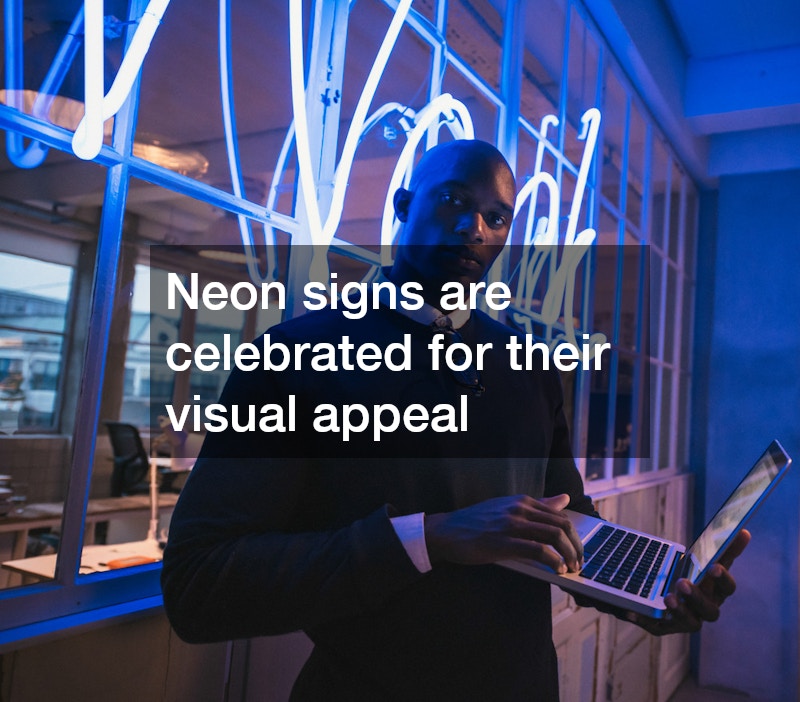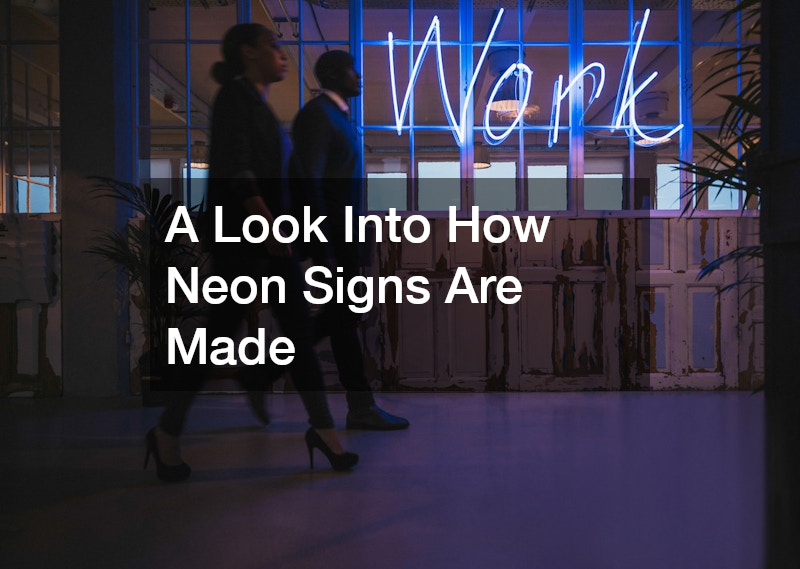
Understanding how neon signs are crafted allows us to appreciate the complex interplay between art and science that gives rise to their entrancing glow. This article delves into the specifics behind the creation of these signs, unraveling the techniques and materials that contribute to their magic. From traditional methods to modern innovations, each phase of neon sign fabrication plays a crucial role in turning simple tubes into dazzling displays of light.
How Are Neon Signs Made?
The Art of Glass Bending
Central to the fabrication of neon signs is the art of glass bending, a skill requiring both precision and creativity. Craftsmen use torches to heat straight glass tubes to make them pliable enough to bend into specific shapes and designs. The entire process requires a delicate balance, as the glass must be heated enough to be malleable without reaching the point of breaking.
The artisan’s expertise is crucial in ensuring each bend achieves the right angle and curvature, forming an integral part of the sign’s visual appeal. Mistakes in this process can lead to structural weaknesses or aesthetic issues that affect the final product. This meticulous approach highlights the blend of technical proficiency and artistic vision required to produce a flawless neon sign.
Choosing the Right Gases
Neon signs owe their dazzling array of colors to the specific gases filled within the glass tubes. Neon gas produces a classic bright red-orange glow when electrified, making it the first and most extensively used gas in this art form. Argon, often paired with a drop of mercury, glows as a vibrant blue, achieving a different spectrum of colors through specialty coatings inside the glass.
The choice of gas is critical in determining not only the hue but also the brightness and longevity of the neon sign. Neon gas is renowned for its efficiency, providing a consistent luminance with long operational life. Each gas combination contributes to the versatility and customization options available, allowing designers to choose colors best suited for their creative needs.
Electrifying the Tubes
Electrification is the final stage in bringing neon signs to life, turning the inert glass structures into vibrant displays. Electrodes are carefully installed at each end of the glass tube, acting as the conduits through which electricity flows. When an electric current passes through these electrodes, it energizes the gas inside, causing it to emit light.
The installation of electrodes requires precision to ensure that the electrical circuit within the sign is complete and functional. Improper fitting can lead to inconsistent lighting or signs that fail to illuminate entirely. This aspect of neon sign construction demonstrates the essential balance of artistry and engineering skill necessary to achieve the perfect glow.
Why Are Neon Signs Popular?
Visual Appeal and Aesthetic Value
Neon signs are celebrated for their visual appeal, a combination of vivid colors and dynamic illumination that captures attention. Their eye-catching glow makes them an enduring choice for advertising, capable of drawing people’s interest from afar. This aesthetic value extends beyond commerce, as artists and designers utilize neon to transform environments and evoke emotions.
Many establishments choose neon signs for their distinctive capacity to stand out, providing an iconic reference often associated with specific locations or brands. The boldness of a glowing sign can convey a message with immediacy, differentiating businesses in competitive urban landscapes. In this way, neon’s aesthetic impact serves both functional and artistic purposes.
Cultural and Historical Significance
Over the decades, neon signs have carved a significant place within cultural history, from bustling city plazas to the silver screen. They evoke a sense of nostalgia, often recalling mid-20th-century cities bustling with nightlife and innovation. As historical artifacts, neon signs capture the essence of periods marked by economic growth and stylistic evolution.
Their resurgence in contemporary design highlights a renewed appreciation for vintage aesthetics and the allure of handcrafted artistry. As modern artists explore retro themes, neon signs offer a tangible connection to the past while enriching today’s creative expressions. This cyclical fascination ensures neon will remain a vital element of both history and modernity.
Versatility and Customization
One of the defining features of neon signs is their versatility, making them well-suited to a range of applications from advertising to art installations. The malleable nature of glass allows for a wide array of shapes and sizes, enabling designers to stretch their creativity without limitation. This adaptability supports a diverse spectrum of designs, from simple text to complex graphical displays.
The customizable nature of neon signs allows businesses and individuals to express their unique identities and messages effectively. Whether as welcoming storefront signage or striking personal artwork in homes, neon offers unlimited potential for customization. Crafted to specification, each sign becomes an original piece tailored to its environment and purpose.
As we have explored, neon signs are the product of intricate craftsmanship, melding artistry with scientific precision. From their creation to their ongoing influence, they embody a unique blend of historical significance and modern allure. Their persistent popularity attests to both their beauty and their functionality as enduring fixtures in advertising and design.
.


